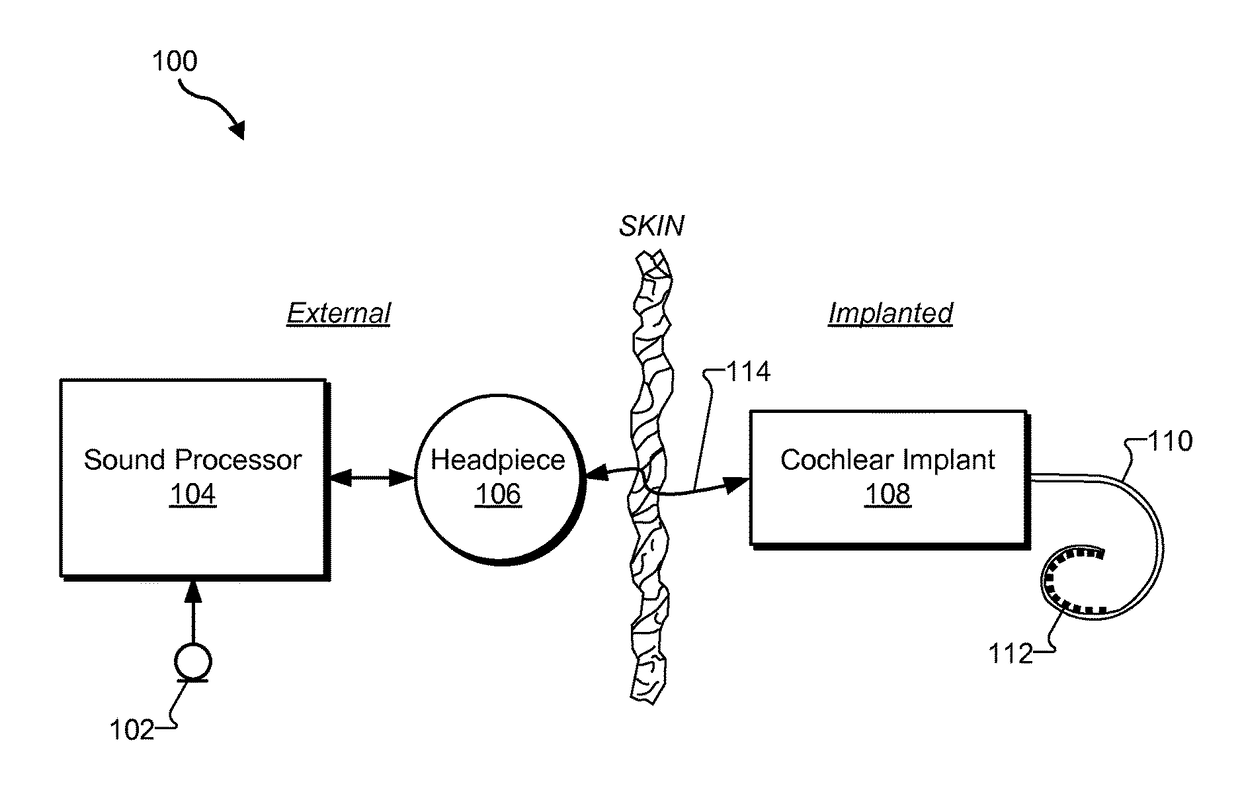Targeted channel selection systems and methods
a channel selection and target technology, applied in the field of target channel selection systems and methods, can solve the problems of wasting power, and transferring more temporal information, and achieve the effect of reducing the amount of power required for generating high amplitude pulses and reducing the amount of power
- Summary
- Abstract
- Description
- Claims
- Application Information
AI Technical Summary
Benefits of technology
Problems solved by technology
Method used
Image
Examples
Embodiment Construction
[0016]Targeted channel selection systems and methods are described herein. As will be described below, a targeted channel selection system may determine a target stimulation rate for a user of a cochlear implant system, determine a pulse width value that is representative of one or more pulse widths that are to be used for stimulation pulses applied by the cochlear implant system to the user during a stimulation session, and determine, based on the target stimulation rate and on the pulse width value, a value for N that is specific to the user. In this example, N represents a total number of analysis channels that are to be selected from M available analysis channels for presentation by the cochlear implant system to the user during a stimulation frame of the stimulation session.
[0017]The systems and methods described herein may allow for individualized values of N for different users (also referred to as “patients”). For example, first and second cochlear implant users may each be ...
PUM
 Login to View More
Login to View More Abstract
Description
Claims
Application Information
 Login to View More
Login to View More - R&D
- Intellectual Property
- Life Sciences
- Materials
- Tech Scout
- Unparalleled Data Quality
- Higher Quality Content
- 60% Fewer Hallucinations
Browse by: Latest US Patents, China's latest patents, Technical Efficacy Thesaurus, Application Domain, Technology Topic, Popular Technical Reports.
© 2025 PatSnap. All rights reserved.Legal|Privacy policy|Modern Slavery Act Transparency Statement|Sitemap|About US| Contact US: help@patsnap.com



